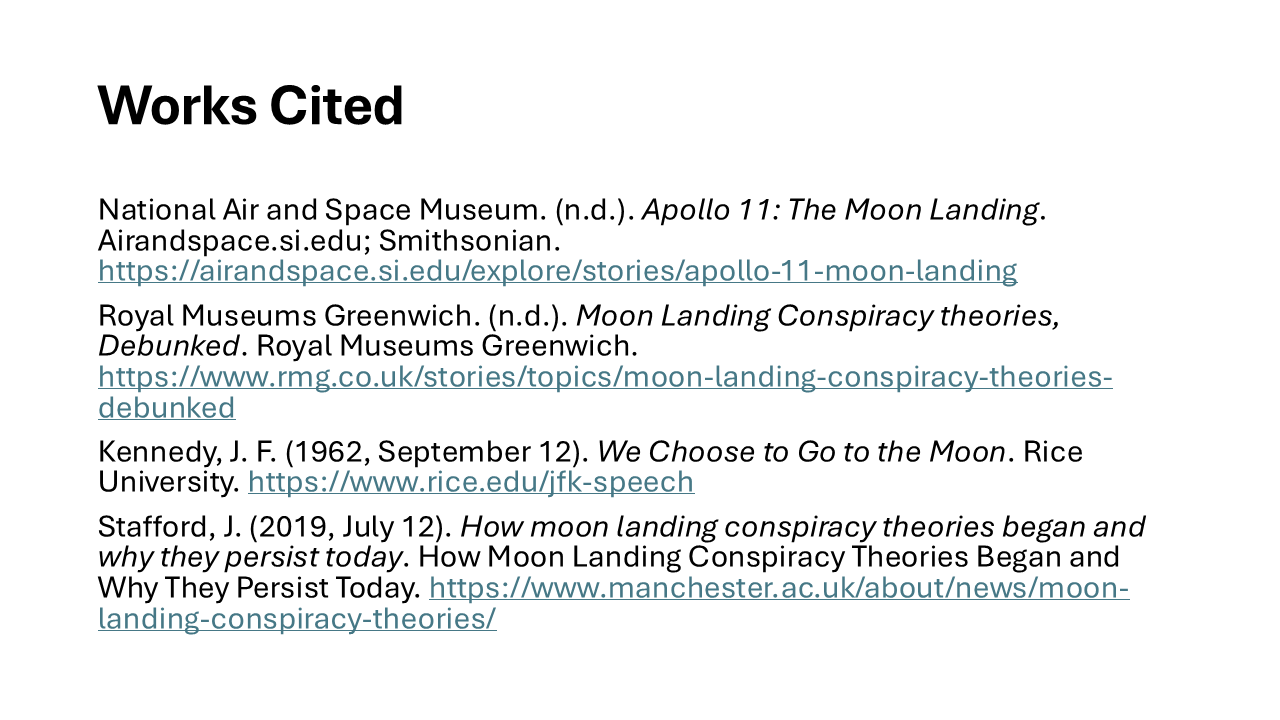Apr 13, 2025
For this assignment I created a lecture that discusses misinformation through the lenses of the moon landing. I discussed things like how misinformation spreads and what we can do to stop it.
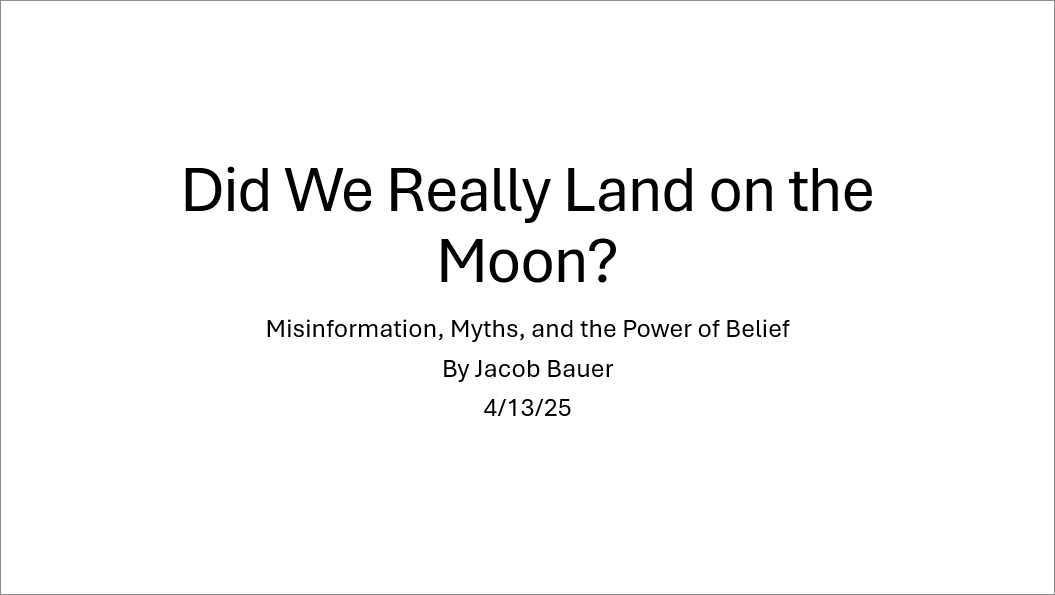
Slide 1: Hello and welcome to my lecture my name is Jacob Bauer, and I will be discussing the idea of whether we really did land on the moon. as well as the myths and misinformation that surround these event.
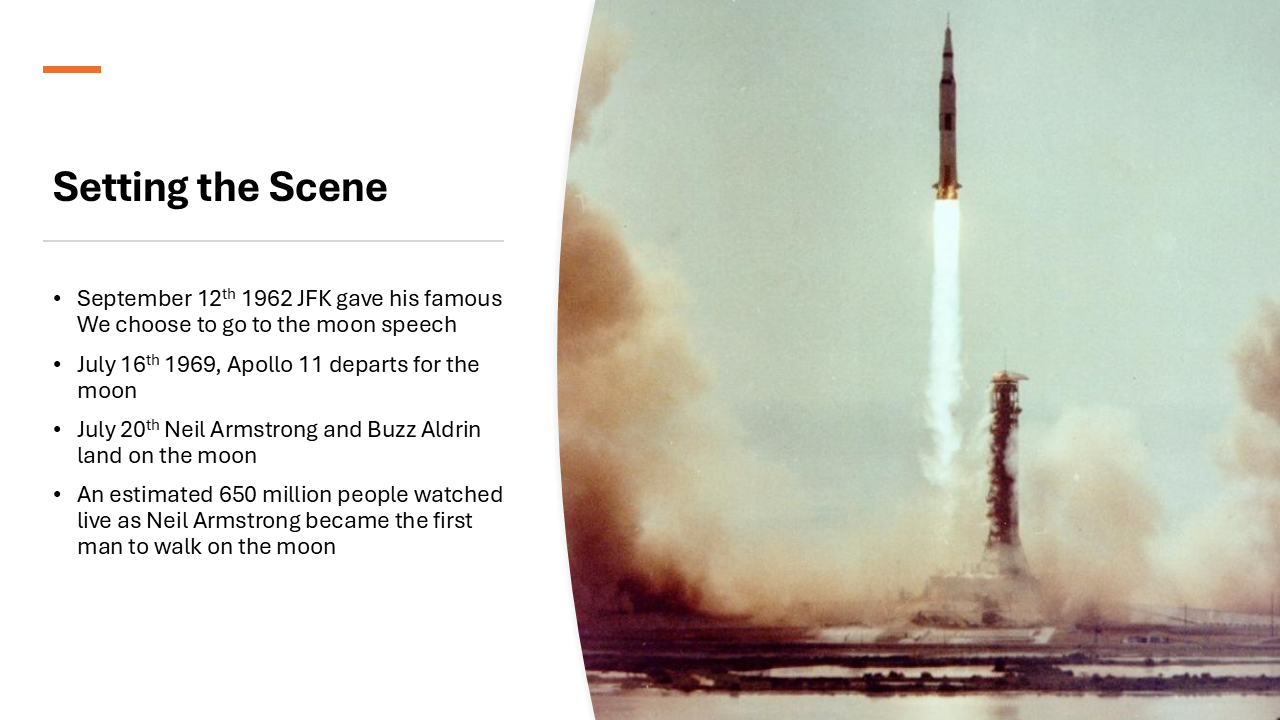
Slide 2: For starters lets get go over some of the basic time and dates so we are all on the same page. (Pause). On September 12th 1962 John F Kennedy gave a speech at Rice University. In this speech he said “We choose to go to the moon. We choose to go to the moon in this decade and do the other things, not because they are easy, but because they are hard, because that goal will serve to organize and measure the best of our energies and skills, because that challenge is one that we are willing to accept, one we are unwilling to postpone, and one which we intend to win, and the others, too” This quote echoed across the country and kicked off Americas full scale efforts to get a man on the moon. About seven years later on July 16th 1969 Apollo 11 Launches from Pad 39A at the Kennedy Space Center in Florida and begins its journey to the moon. 4 days later, on July 20th at 10:56 p.m Eastern time Neil Armstrong took his last step off the ladder and became the first man to set foot on the moon. During this historic event over (EMPHASISE) 650 MILLION (EMPHASISE) people watched it live on TV.
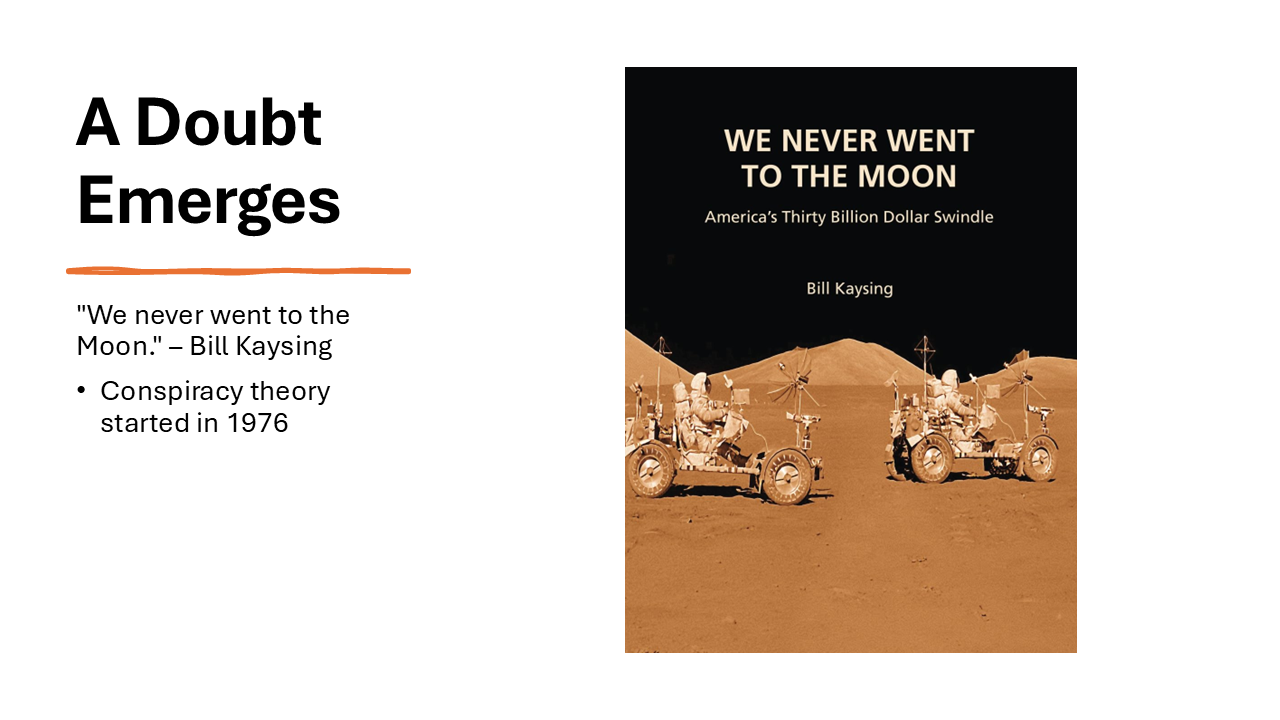
Slide 3: Despite this monumental achievement that caused the whole county to celebrate. (pause) Doubts began to form in the years after the country watched what many described later as the most exciting thing in their entire lives.
(Pause) It all began with the publication of the book “we never went to the moon” by Bill Kaysing. Bill was a former US Navy officer who worked as a technical writer for one of the rocket manufacturers that NASA hired for the Apollo moon missions. In his book he made claims that he had inside knowledge of a government conspiracy to fake the moon landing. many conspiracy theories about the Apollo moon landings which persist to this day can be traced back to his book.
(emphasis) Despite not having any scientific background Kaysings book offered commentary on the merits of NASAs ability to build a rocket powerful enough to send men to the moon as well as the validity of the photos and video taken on the mission.
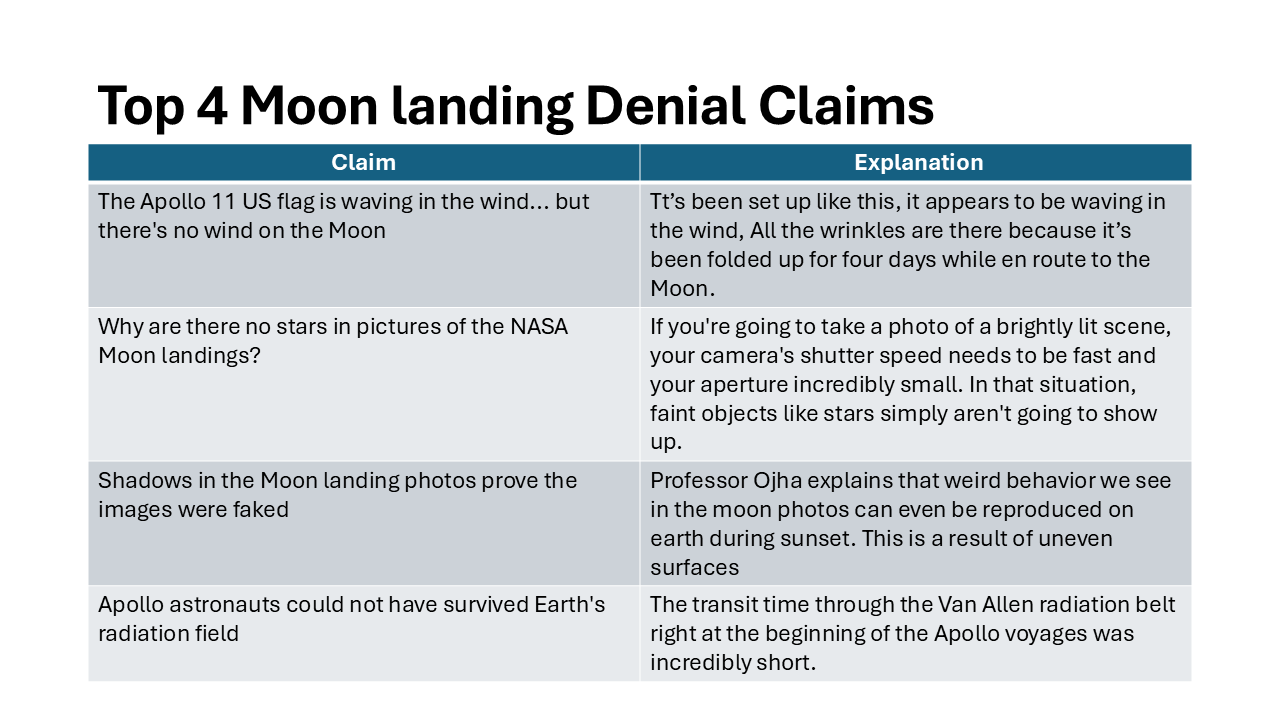
Slide 4: After Kaysing began to spread the ideas that the moon lading was not what it seemed many of the most common moon landing conspiracies began to take the form that we know them today. Some of the most famous ones are
According to the royal museum in Greenwich (quote) “The Apollo 11 US flag is waving in the wind… but there’s no wind on the Moon. (quote) Why are there no stars in pictures of the NASA Moon landings? (quote) Shadows in the Moon landing photos prove the images were faked (quote) Apollo astronauts could not have survived Earth’s radiation field
All of these conspiracies have scientific explanations provided by professor Ojha that I have added to the table. These explanations are backed up by other experiments. And most famously Myth Busters did an excrement that showcased why the flag on the moon was waving in space.
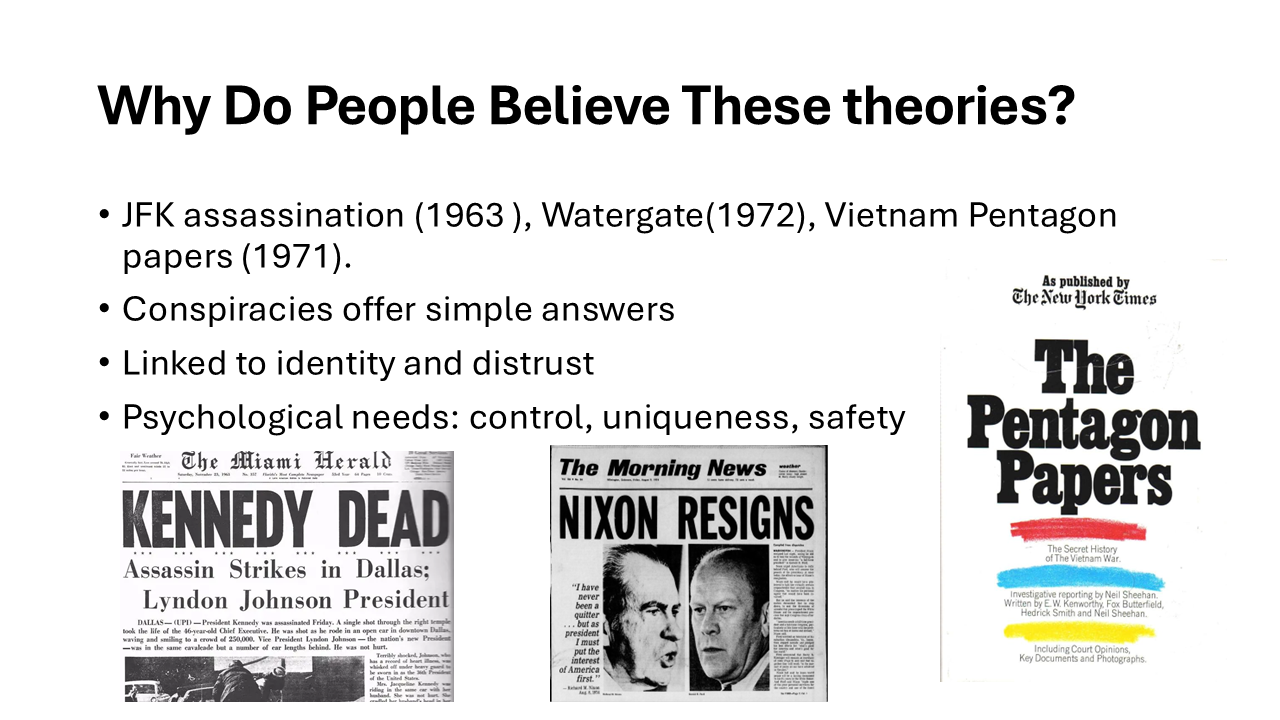
Slide 5: According to an article written by the university of Manchester. (Pause) The reason that Kaysings ideas were able to take hold in the America publics mid was due to several factors that are often overlooked by other discussions.
The context in which these ideas took hold are interesting. At the time in the 1970s the country was in the middle of several disasters that undermined the trust of the American public in the government. From the release of the pentagon papers which showed that the Johnson administration had been systematically lying about the Vietnam War to the public. (PAUSE). A series of congressional reports also detailed CIA malfeasance both at home and abroad and suggested that there was a high probability that there had been a conspiracy to kill president Kennedy. (PAUSE) Finally was the Watergate scandal that left the county shocked and with a new president.
(New idea) These revelations helped fuel a wider shift in conspiracy thinking, from a belief in external enemies, such as Communists, to the suspicion that the American state was itself conspiring against its citizens.
To many the moon lading conspiracies offered by Kaysing arrived at the perfect time to offer a simple answer of government lies to the complex situation of American achievement and political turmoil that was at the front of all American minds.

Slide 6: In the modern age the spread and creation of misinformation or “fake news” has become much more prevalent. It can spread across social media and the engagement algorithms that are designed to keep us on the sties for as long as possible feed us more of the same things that we like and less of the stuff that we don’t. this creates echo chambers where all we are exposed to is the stuff that we like. This is a problem because repetition of ideas further cements them into our beliefs.
The ideas that spread the fastest and the furthest are the ones that are based on emotions. Like fear, suspicion and (emphasis) ANGER. Outrage content exists for this reason.
You can avoid falling into these traps by bettering your media literacy to better spot these tricks and avoid falling onto their traps.
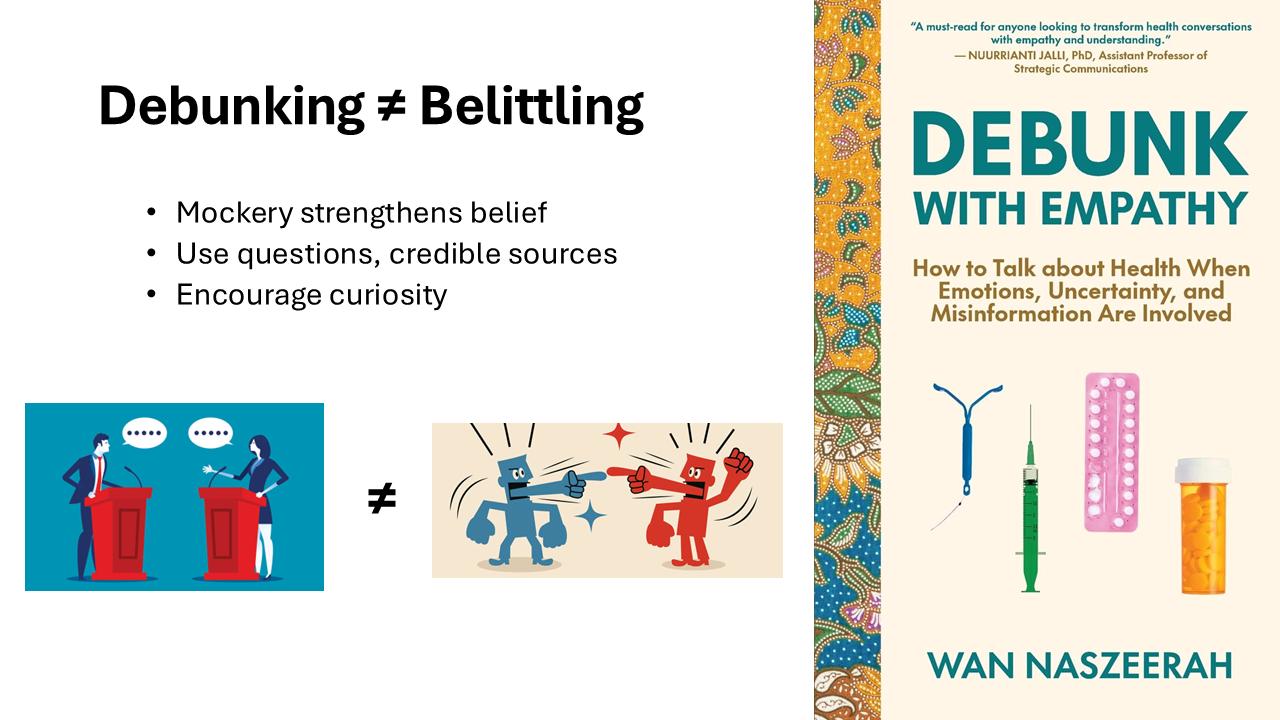
Slide 7: In the book Debunk with empathy written by Mike Caulfield he discusses how Mockery only strengthens someone’s beliefs. This entrenchment only makes it harder to change someone’s mind and help them. Especially if they are pursuing dangerous conspiracies. Its not the end of the world if someone does not beloved that the moon landing was real. But it can be the end of the world when someone is avoiding life saving treatment because they believe that modern medicine is not effective at saving lives.
The best way to change someone’s mind is to ask them questions and use credible sources when debating them. Going even further you can encourage them to ask their own questions and do their own research.
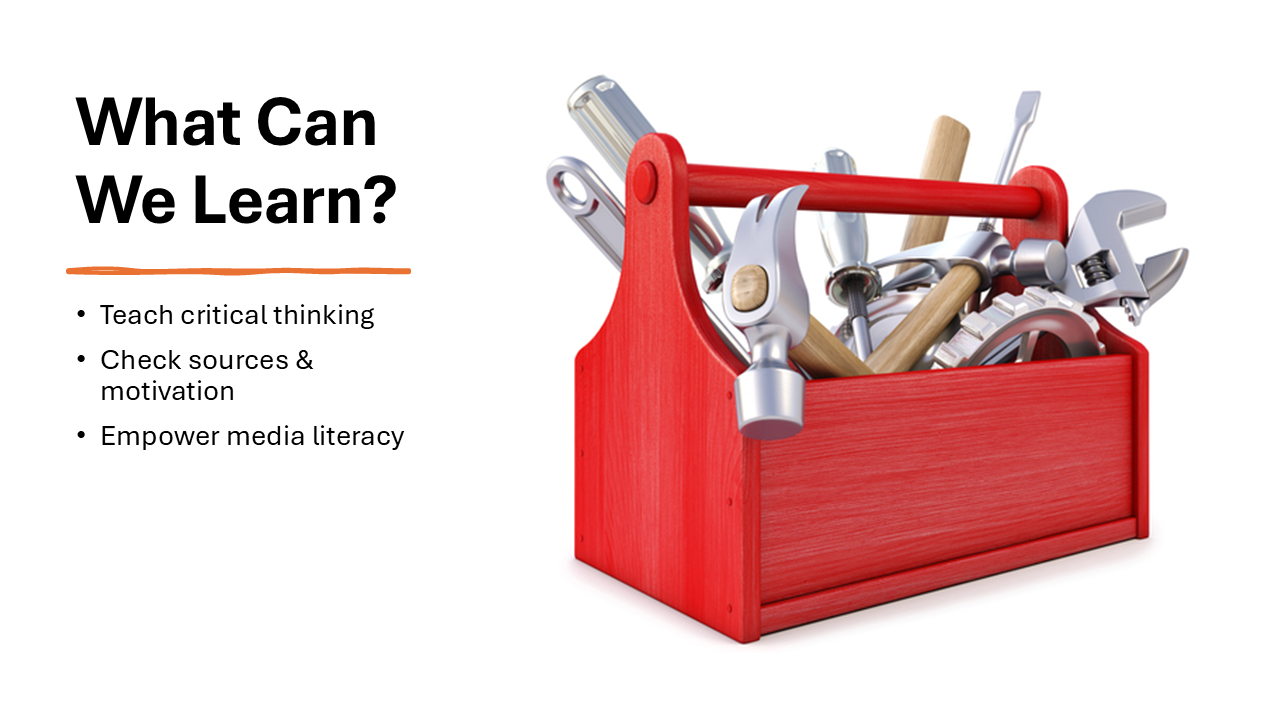
Slide 8: What can we learn from looking at the conspiracies surrounding the Moon lading. we have learned that they arise from a period of extreme uncertainty. Much like the conspiracies that we saw arise in 2020 during the pandemic.
If you take away anything from this presentation, I hope that It is the ability to look at the things people are saying critically. Consider their motivations. If you are outraged ask yourself if this is the goal… (pause)
Look into the sources of what people are claiming. If they can’t back it up with something concrete, then be skeptical.
Adding these tools to your toolbox will allow you better interpret the media that you consume on a daily basis. By being skeptical and asking questions you can become someone that thinks for themselves and doesn’t fall victim to manipulation campaigns.
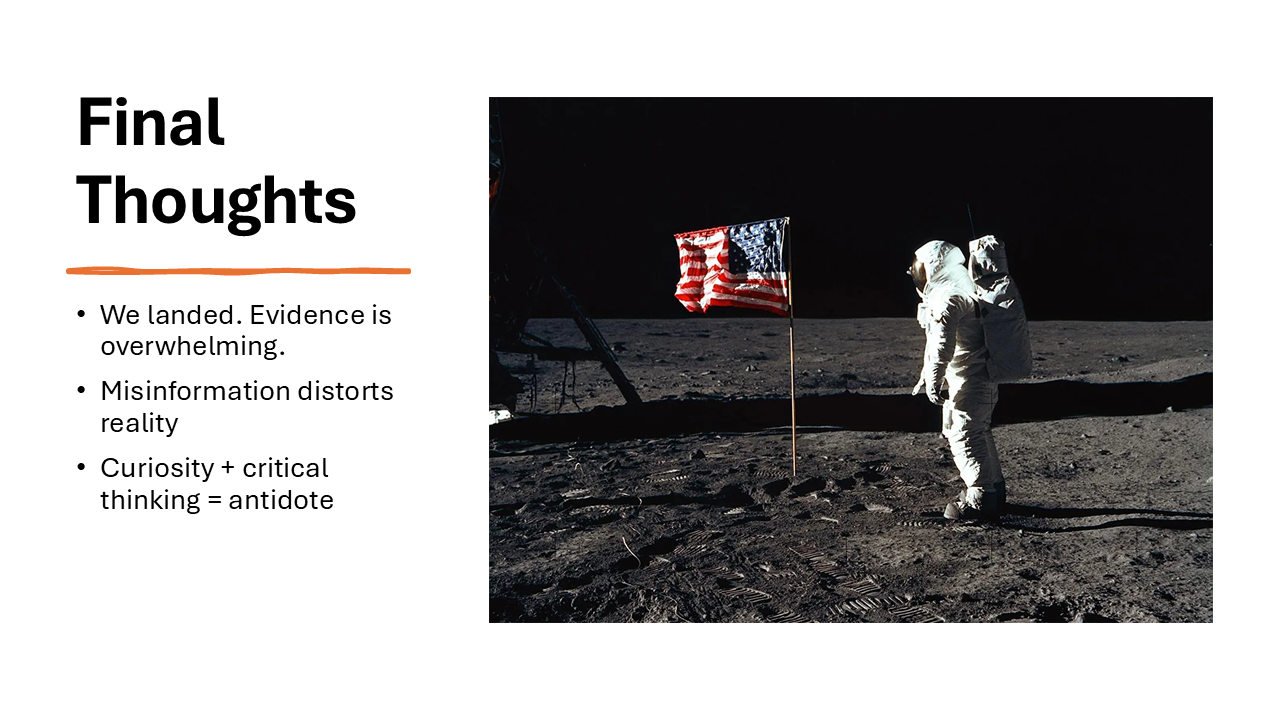
Slide 9: To wrap it all up. Its clear that misinformation distorts reality. We have seen that the facts and science are on the side of the moon landing. The claims made against it are made by people looking to exploit the social situation for their own benefit. Be curious. Ask questions and (EMPHASIS) most of all…. be willing to change when you are confronted with facts that go against your current beliefs.
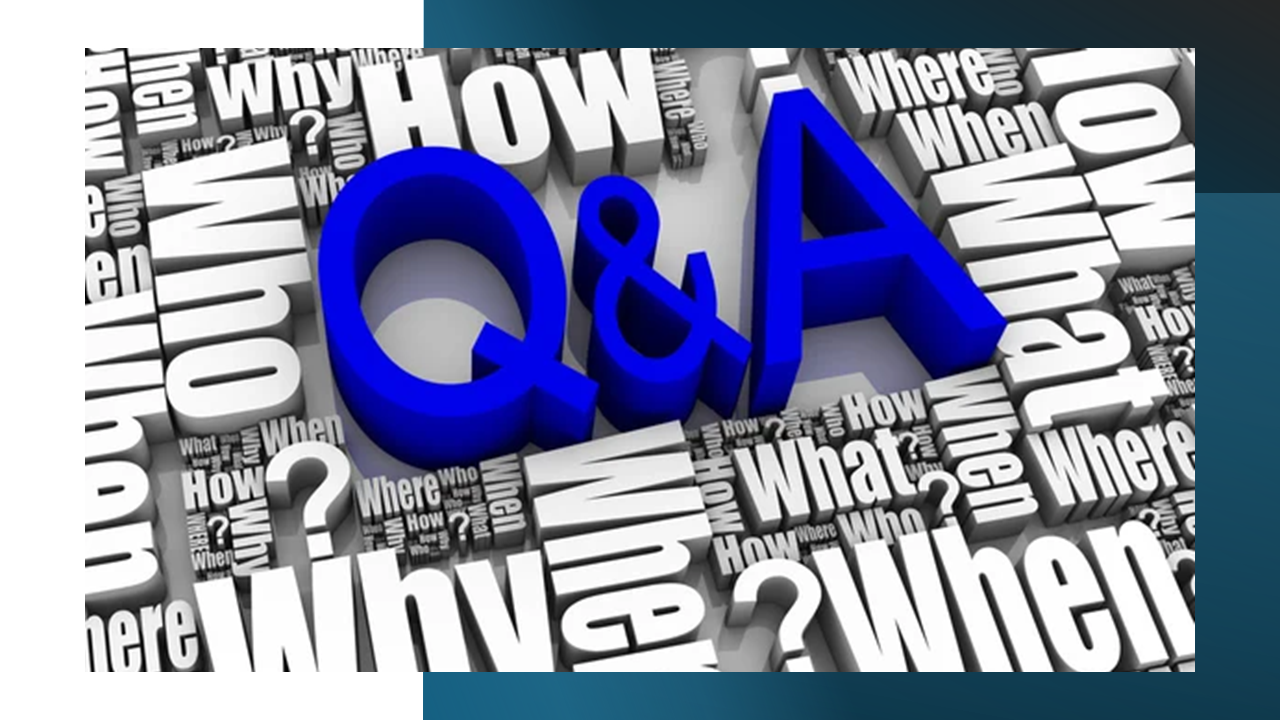
Slide 10: Now in the spirit of being skeptical and asking questions. Id like to open it up to the audience to ask me any questions you may have about the moon landing or misinformation as a whole…
Possible questions the audience could ask •Why do some conspiracies spread more than others? •Have you changed your mind on a belief before? •How do you fact-check online info in an effective manner?
